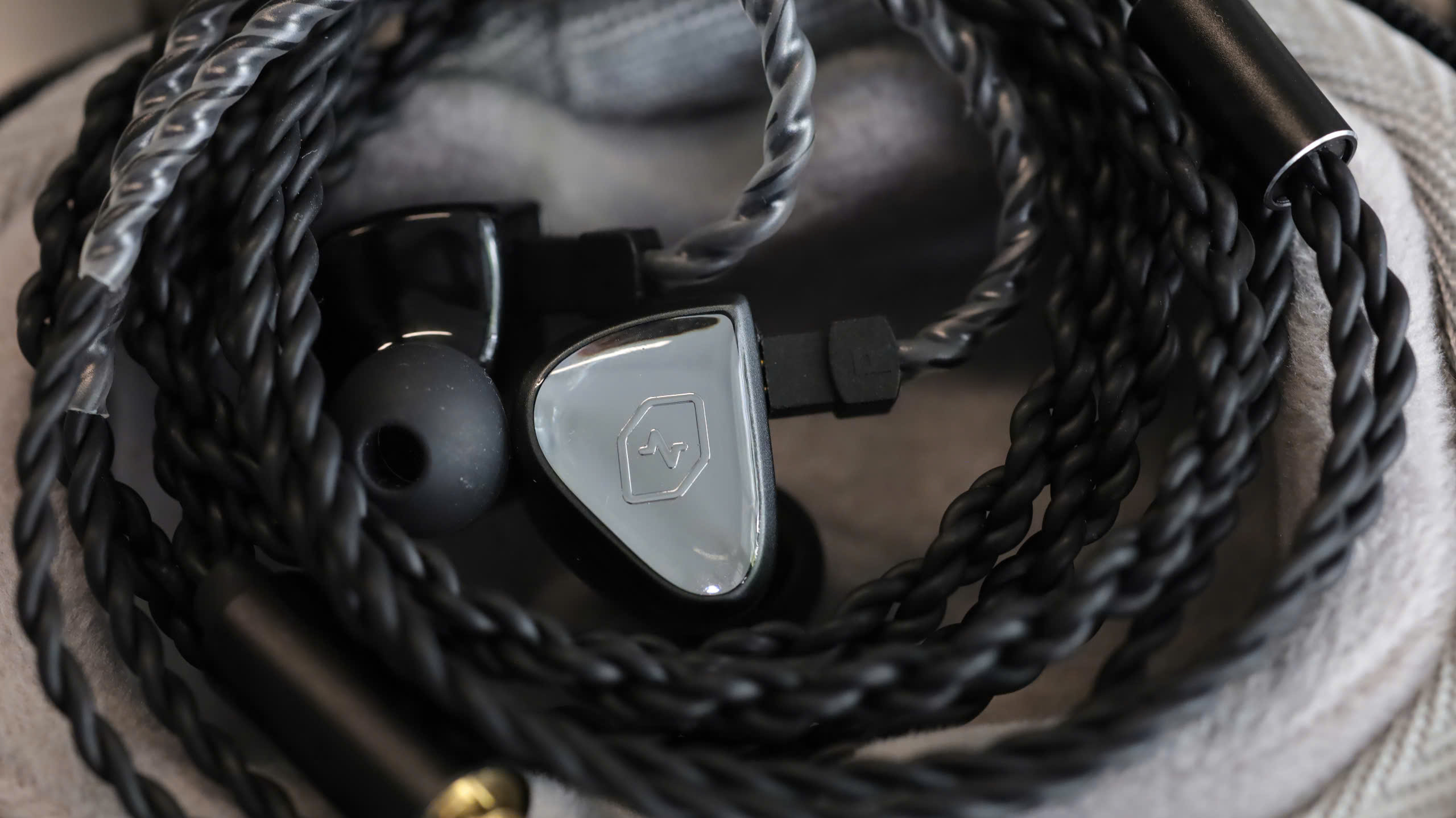The included USB-C charging cable is longer than we typically see. There's also a USB adapter included for those who lack USB-C ports for charging. And that's it—Klipsch keeps things relatively light and simple on the accessories front.
The earpieces (not the case) have an IPX4 rating, which means they can handle some light splashes, but you shouldn't run them under a faucet or submerge them in any way. Light to moderate rain and sweat shouldn't be an issue.
The Klipsch Connect app wasn't ready at the time of review, but it purportedly has EQ settings and various other helpful inclusions like battery status readouts and firmware updates.
Klipsch claims battery life for the T5 True Wireless is 8 hours. We find this number somewhat optimistic based on most competing models we've reviewed, but even if it's off by an hour or so, this estimate puts it near the top of the true wireless in-ears we've tested thus far. On top of that, Klipsch claims the case holds another 24 hours of battery life, which is quite good.
Performance
Mid-level volume on these earphones feels quieter than many of the models we've tested, and while the maximum volume level is still louder than anyone should be listening at for any prolonged period of time, it feels a bit less intense than we've heard elsewhere. This isn't a complaint, however. Most in-ears simply get too loud, and these are closer to how overall volume levels should be.
One other note: It's possible to have a secure-feeling fit but not have the most ideal in-canal seal. Simply twisting the earpieces forward or backward once they're in should help create a much stronger seal, and this will be the difference between hearing only modest bass depth and hearing full, thumping bass.
With the ideal in-canal seal in place, the earphones deliver solid bass depth at moderate volume levels on tracks with intense sub-bass content, like The Knife's "Silent Shout." At top volume levels, the bass doesn't distort. There's plenty of sculpted high-mid and high frequency presence here to keep things balanced, as well.
Bill Callahan's "Drover," a track with far less deep bass in the mix, gives us a better sense of the general sound signature. The drums—provided you get the proper in-canal seal—sound full-bodied and rich. There's not so much boosting that things are unnatural, but there's definitely some extra heft to the drums and added richness to Callahan's vocals, all balanced out nicely with the crisp attack of the acoustic guitar strums and higher-register percussive hits.
On Jay-Z and Kanye West's "No Church in the Wild," the kick drum loop receives plenty of high-mid presence, allowing its attack to retain its punchy presence in the mix, while the sub-bass synth hits that punctuate the beat are delivered with gusto. Those seeking subwoofer-like depth might want just a bit more (which could be provided when the app's EQ is available), but this is a full-sounding bass response—it's balanced within the mix rather than overwhelming it, as we often hear. The highs are quite dialed up, too—the vinyl crackle and hiss step forward in the mix notably, and the vocals are delivered clearly, without much of a sense of added sibilance.
Orchestral tracks, like the opening scene from John Adams' The Gospel According to the Other Mary, sound excellent through the T5 True Wireless. There's a wonderful balance of lower register richness and higher register brightness. Perhaps purists will find there to be a tad too much bass depth here, but it's not over-the-top, and is balanced by sculpted highs.
The four-mic array offers better-than-average intelligibility. Using the Voice Memos app on an iPhone 8, we could understand every word we recorded cleanly and clearly, without much added Bluetooth fuzz around the edges. The mic sounds slightly distant, but generally speaking, it offers better intelligibility than most mics on true wireless pairs that we've tested.
Đang cập nhật
Đang cập nhật

















.png)





